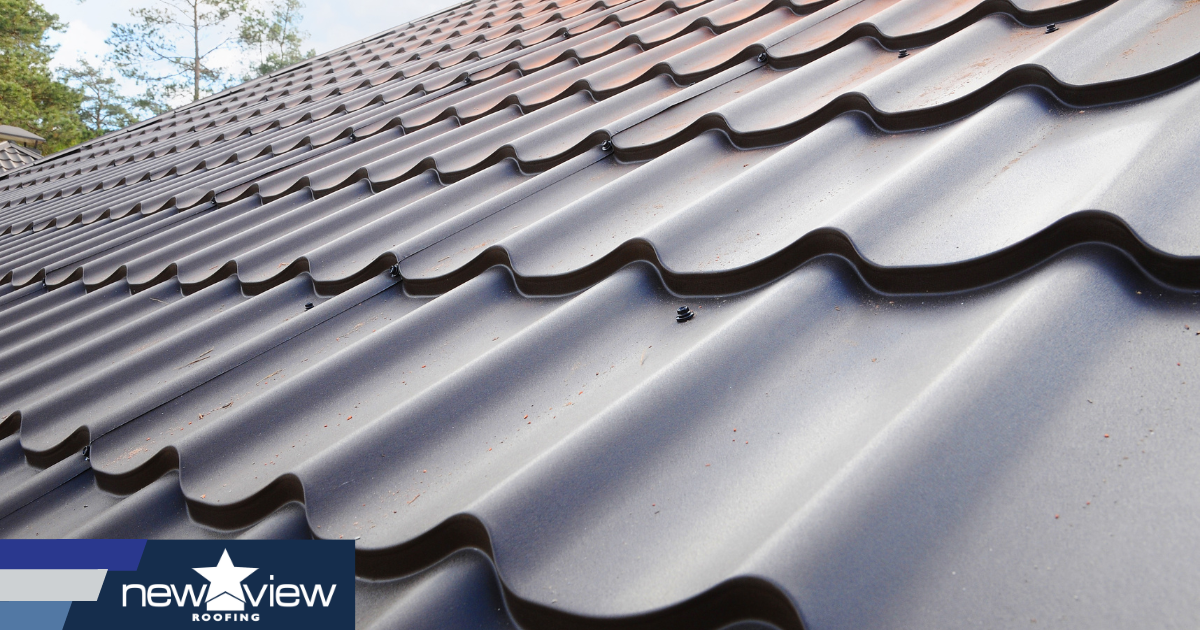Just How Gainesville Roofing Companies Can Change Your Home's Exterior
Ideal Practices for Ensuring Appropriate Roofing Air Flow
Making certain appropriate roof ventilation is vital for the longevity and effectiveness of a roof system. A well balanced consumption and exhaust air vent proportion, frequently 1:300, plays a pivotal role, with intake vents ideally placed at the lower edge of the roofing system for awesome air entry and exhaust vents at the optimal for warm air exit. Routine examinations to identify clogs and preserve clear airflow are vital. Additionally, keeping insulation far from vents is important to avoid air flow limitation. Understanding these fundamental components sets the phase for even more thorough understandings right into installment and maintenance techniques that can dramatically improve your roof's efficiency.
Understand Air Flow Basics
Correctly comprehending ventilation fundamentals is crucial for guaranteeing the longevity and efficiency of roof. Efficient ventilation reduces moisture accumulation and temperature extremes in the attic room, both of which can lead to substantial architectural damages gradually. A well-ventilated roof covering assists in protecting against common issues such as mold and mildew development, wood rot, and ice dams, which can compromise the stability of the roof products and the underlying frameworks.
The key goal of ventilation is to facilitate the movement of air, permitting for a regular exchange in between the interior and outdoor atmospheres. This equilibrium is accomplished through a combination of intake and exhaust vents that collaborate to preserve optimum air flow. Intake vents, generally located along the eaves or soffits, enable fresh air to get in the attic room space, while exhaust vents, commonly located at or near the roof covering ridge, allow warm, damp air to get away.
Key variables affecting the performance of roof covering air flow consist of correct placement, sufficient sizing, and making sure that both intake and exhaust vents are unhampered. Normal assessment and maintenance are critical to recognize possible blockages, damages, or inadequacies in the air flow system, thus securing the roof's performance and toughness.
Kinds Of Roof Covering Vents
Roof vents play a critical role in preserving efficient attic room air flow and, by expansion, the overall health of the roof. Numerous sorts of roofing vents are available, each with one-of-a-kind advantages tailored to specific roof covering requirements. Ridge vents, for instance, are installed along the roof covering's height, permitting warm, damp air to escape from the attic room. They offer continuous ventilation and mix flawlessly with the roofline, making them both effective and aesthetically pleasing.

Soffit vents are set up under the eaves and operate in tandem with roofing vents to guarantee a well balanced intake and exhaust system. By permitting cooler air to enter from below, soffit vents facilitate the expulsion of hot air via top vents. Gable vents, situated on the exterior walls of the attic room, offer one more efficient remedy, especially in homes with gable roofs.
Evaluate Your Present Ventilation

Following, take into consideration the age and condition of your roof products and ventilation components. Older systems may not follow existing building regulations or may have weakened over time, lowering their performance. Conduct a thorough assessment to determine any indicators of deterioration, such as rust, damages, or voids that can compromise the system's performance.
In addition, gauge the attic room temperature and moisture degrees. High temperature levels and humidity can show poor air flow - roofing companies. Utilize a hygrometer and thermometer to get accurate analyses, comparing them with exterior conditions. Persistent inconsistencies suggest prospective problems that require dealing with.
Installment Best Practices
Reliable setup of roof covering air flow systems is critical for making sure optimum performance and longevity. Appropriate installment begins with comprehending the details ventilation needs of the building and the roofing system it covers. This involves calculating the proper proportion of consumption to exhaust vents, normally adhering to the 1:300 policy, which stipulates one square foot of ventilation for every single 300 square feet of attic room flooring space.

The placement of More Bonuses vents is similarly essential. Intake vents must be set up at the roofing's lower edge, frequently in the soffits, to allow awesome air to go into. Exhaust vents, on the various other hand, must be set up near or at the roofing's optimal to promote the exit of cozy, wet air. This develops a natural airflow that helps maintain temperature level and dampness equilibrium within the attic room space.
Seal all vent connections meticulously to stop air leaks and potential water infiltration. Use premium products and follow supplier guidelines to ensure durability and performance. Additionally, integrating ridge vents with baffles can significantly enhance airflow efficiency by protecting against wind-driven rain and snow from getting in the attic.
Eventually, precise installment of roof covering air flow systems mitigates possible problems such as mold and mildew development, ice dams, and structural damages, ensuring the roofing system's stability and the building's general health.
Normal Upkeep Tips
Consistency in maintenance methods is basic to making certain the long-term efficiency of roof air flow systems. Normal assessments are important, preferably performed biannually-- in the springtime and autumn. Throughout these inspections, ensure that vents are totally free of debris, nests, and other blockages that can hamper airflow. Look for any kind of indicators of wetness build-up or mold, as these can suggest inappropriate air flow or leaks (roofing companies in gainesville florida).
Cleaning the vents is one more vital job. Utilize a soft brush or a vacuum to eliminate dust and particles from consumption and exhaust vents. Be careful not to damage the air vent displays or louvers during the process. Furthermore, check the attic room room for any kind of indicators of water damage, which can compromise the honesty of the roof.
Appropriate insulation is equally crucial. Guarantee that attic room insulation does not block the vents, as this can significantly limit air movement. If any insulation has actually changed or settled, reposition or replace it to preserve an efficient barrier.
Lastly, replace any damaged or missing parts promptly. Busted vents, cracked roof shingles, or scrubby flashing can all add to insufficient ventilation and needs to be resolved without hold-up. Regular maintenance makes sure that the roofing air flow system operates optimally, therefore prolonging the life-span of the roof covering itself.
Verdict
Ensuring appropriate roof air flow is critical for maintaining the efficiency and sturdiness of a roof system. Adherence to the 1:300 intake and exhaust air vent ratio, paired with the tactical positioning of vents, is necessary.
A well balanced intake and exhaust vent proportion, typically 1:300, plays a crucial role, with consumption vents ideally put at the reduced side of the roofing for amazing air entrance and exhaust vents at the peak click over here now for warm air departure. Intake vents, generally situated along the eaves or soffits, enable fresh air to enter discover this info here the attic area, while exhaust vents, typically positioned at or near the roof covering ridge, allow warm, humid air to leave.
Soffit vents are installed under the eaves and job in tandem with roofing vents to make certain a well balanced intake and exhaust system. By permitting cooler air to go into from below, soffit vents promote the expulsion of warm air with top vents. Adherence to the 1:300 consumption and exhaust vent proportion, coupled with the critical positioning of vents, is essential.